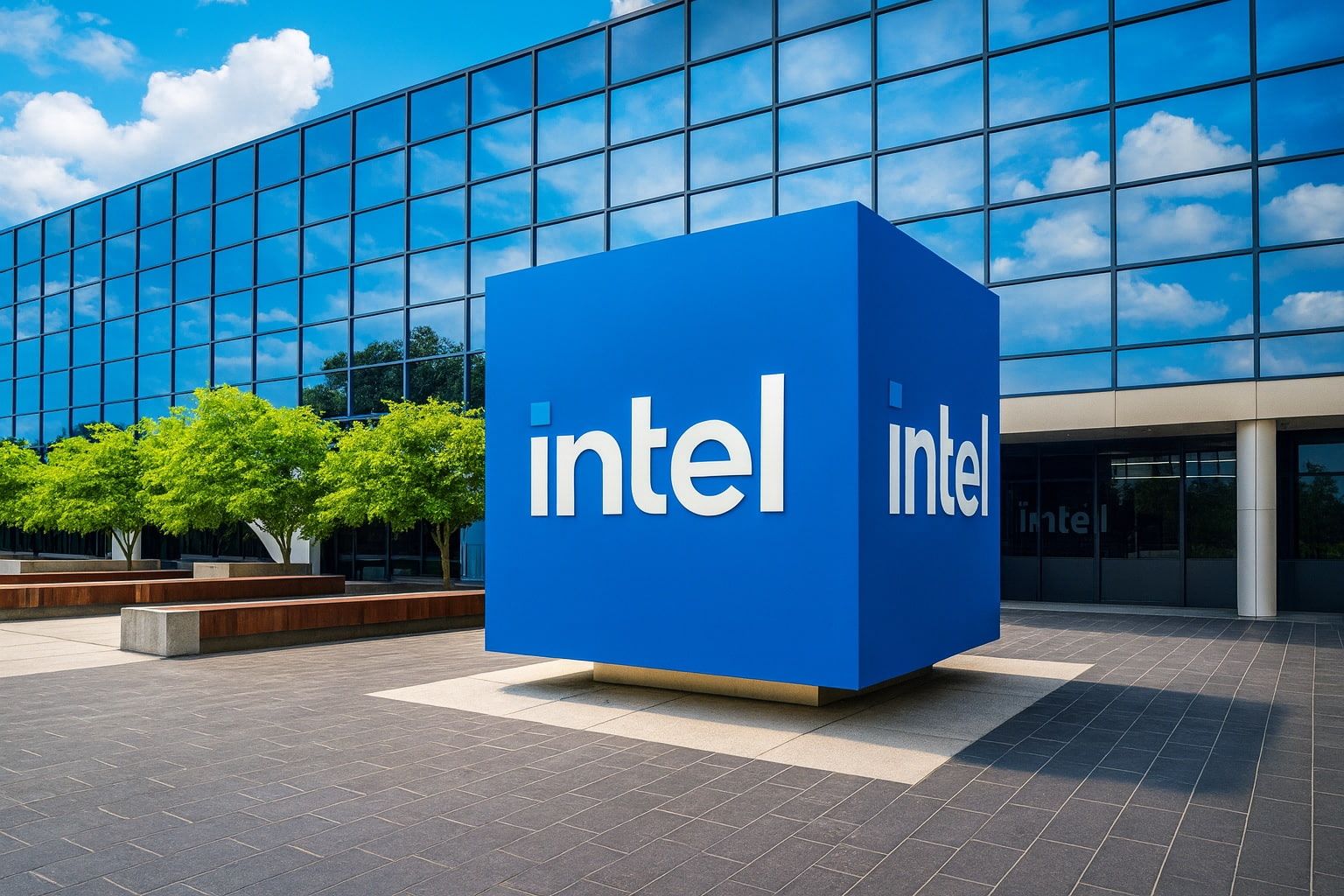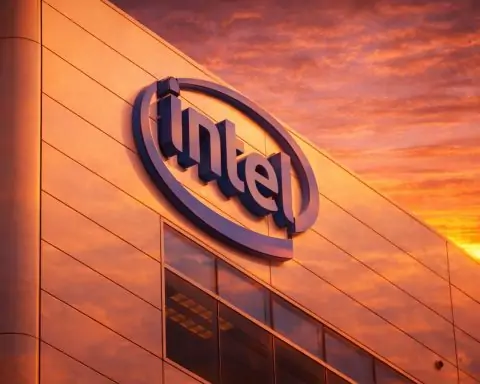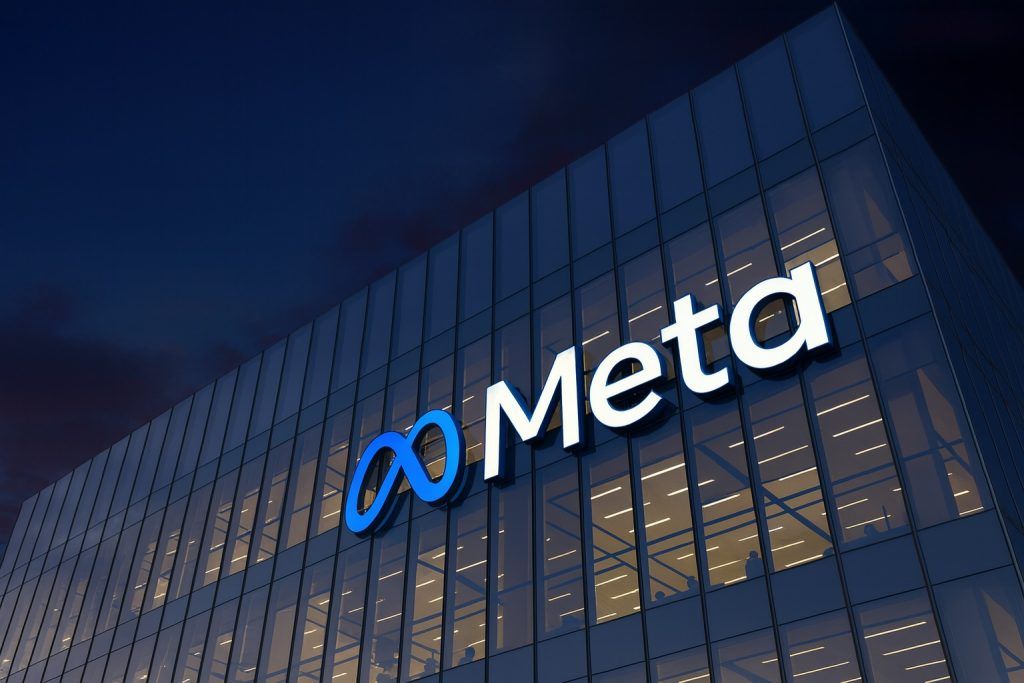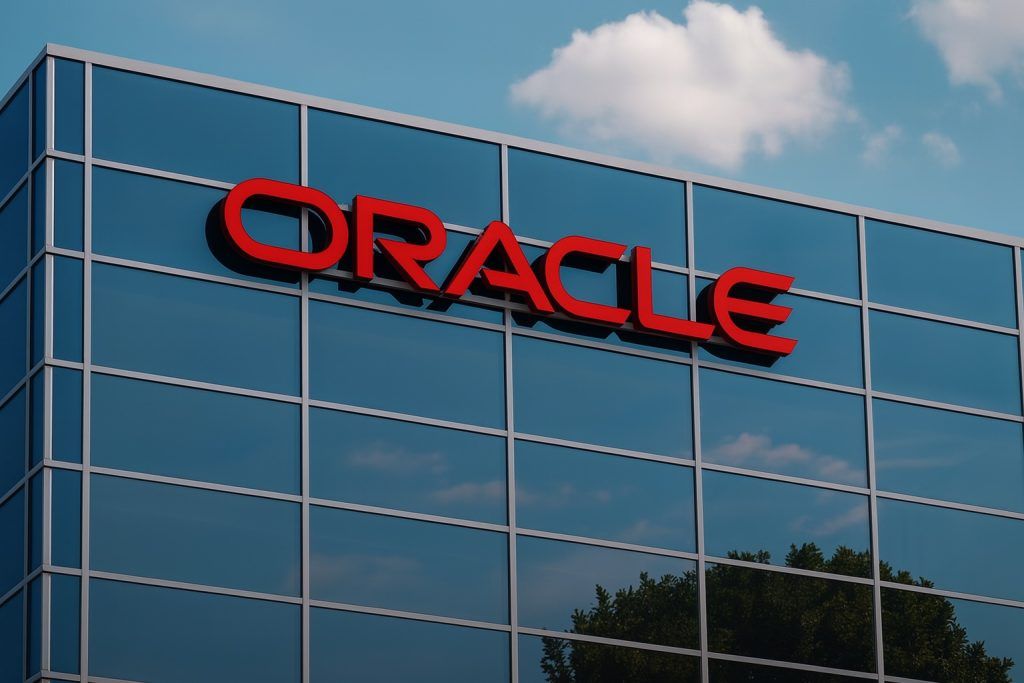Intel stock (INTC) fought to stabilize on Friday after a bruising tech sell‑off and fresh Oregon layoffs. Here’s how the latest AI strategy moves, cost cuts, and Wall Street calls are shaping the outlook after the November 14, 2025 close.
Intel stock price today: INTC steadies after Thursday’s 5% plunge
After a volatile week for AI and chip names, Intel stock (NASDAQ: INTC) spent Friday trying to find its footing.
As of trading shortly after the U.S. close on November 14, 2025, Intel shares were changing hands around $35.5, down roughly 1% from yesterday’s close near $35.9. Intraday, the stock traded between about $34.2 and $36.1, a swing of more than 5%, on heavy volume north of 70 million shares.
That follows Thursday’s 5.2% slide to $35.91, which snapped part of Intel’s powerful 2025 rally and left the stock roughly 16% below its late‑October 52‑week high near $42.50. TechStock²+1
Friday’s session played out against a choppy broader market:
- The Dow Jones Industrial Average fell again but still finished the week higher overall.
- The Nasdaq and S&P 500 were mixed, with tech names swinging between steep losses and modest gains as investors reassessed whether AI stocks have run too far, too fast. [1]
- After opening lower, many mega‑cap techs recovered into the close — but Intel notably lagged, one of the few big AI‑sensitive names that didn’t fully bounce back. [2]
Put simply: INTC didn’t crash today — it churned. But the backdrop was anything but calm.
Fresh Oregon layoffs highlight harsher cost discipline
The most immediate company‑specific headline for Intel today was not about AI or new chips — it was about jobs.
Regulatory filings and local press reports confirmed that Intel will cut another 669 workers in Oregon by the end of 2025, affecting facilities in Hillsboro and Aloha, just outside Portland. [3]
Key points from today’s reporting:
- Intel has already cut roughly 2,400–2,500 Oregon jobs this year, meaning the company will have eliminated over 3,100 positions in the state in 2025 once the new round is complete. [4]
- The latest reductions span multiple sites and job types, with layoffs having started in September and continuing into year‑end. [5]
- At its peak, Intel employed around 23,000 people in Oregon; local coverage now estimates headcount closer to 18,000 after successive cuts. [6]
In a statement to Oregon Public Broadcasting, Intel said the cuts are part of efforts to become a “leaner, faster and more efficient company,” emphasizing that the moves are meant to support long‑term growth and competitiveness. [7]
From a stock perspective, these layoffs have a double edge:
- Bullish angle: They reinforce Intel’s commitment to aggressive cost reductions after years of heavy spending and weak profitability. Investors who like the name often point to CEO Lip‑Bu Tan’s willingness to take painful steps to restore margins. [8]
- Bearish angle: They highlight how deep the restructuring goes — not just trimming fat, but reshaping the workforce in a state that houses Intel’s key R&D hub. That raises questions about morale, execution risk and how quickly Intel can ramp new technologies while cutting this hard.
Today’s Oregon headlines dovetail with Intel’s July guidance that its global workforce would end 2025 “over one‑fifth smaller” than last year, part of a sweeping restructuring that has already eliminated thousands of roles across multiple U.S. states. [9]
AI leadership shake‑up: CEO takes direct control after OpenAI poach
Today’s trading also continues to digest a major AI leadership shift that hit the tape earlier this week.
On November 10, Intel confirmed that CEO Lip‑Bu Tan will personally oversee the company’s AI and advanced technologies group after chief technology officer and chief AI officer Sachin Katti left for OpenAI. [10]
According to Reuters:
- Katti, who has led Intel’s AI efforts since a January reorganization, announced on X that he joined OpenAI.
- Intel said Tan will work closely with AI and advanced tech teams, stressing that “AI remains one of Intel’s highest strategic priorities” and that the company is focused on executing its product roadmap. [11]
- The move follows a series of senior departures as Tan reshapes leadership and flattens the org chart in his turnaround attempt. [12]
For markets, this is symbolically huge:
- On the positive side, Tan’s direct oversight signals to investors that Intel’s CEO is hands‑on in the AI fight, not delegating the most strategic battle in chips.
- On the negative side, losing a CTO/chief AI officer to OpenAI — the poster child of the AI boom — underlines just how intense the talent and technology arms race has become, and how far Intel still has to go versus Nvidia and other leaders. [13]
This leadership twist is one reason several commentaries today framed Intel as “high‑risk, high‑reward” in AI rather than a clear winner.
Earnings, AI funding and the turnaround story in the background
Behind today’s headlines is a much bigger narrative that has driven Intel’s nearly 90% stock gain in 2025, even after this week’s pullback. [14]
Q3 2025: Better than feared, but not flawless
On October 23, Intel beat third‑quarter profit estimates, thanks largely to aggressive cost cuts and early payoffs from big new investments. [15]
Key Q3 numbers (non‑GAAP unless noted):
- Revenue: about $13.65–$13.7 billion, roughly 3% higher year over year and slightly ahead of Wall Street estimates. [16]
- Adjusted EPS: $0.23 vs. roughly $0.01 expected, according to LSEG and MarketBeat data. [17]
- Adjusted gross margin: around 40%, beating expectations of about 36%. [18]
By segment, Intel reported:
- Client Computing (PCs): roughly $8.5B, up about 5% YoY
- Data Center & AI: about $4.1B, down around 1% YoY
- Intel Foundry Services: about $4.2B, down ~2% YoY TechStock²
The catch: once special items like government subsidies and asset sales are stripped out, net margin is still extremely thin — around 0.4%, with return on equity slightly negative, according to MarketBeat. [19]
Looking ahead, Intel guided for:
- Q4 revenue: $12.8–$13.8 billion, a midpoint just below analysts’ consensus.
- Q4 non‑GAAP EPS: around $0.08, with GAAP EPS likely slightly negative. [20]
Analysts tracked by MarketBeat still expect a small full‑year loss (around –$0.11 per share) for 2025 despite the upbeat headline profit in Q3. [21]
Massive strategic funding from Nvidia, SoftBank and the U.S. government
If earnings show the “profitability problem,” Intel’s funding deals show why many investors still want exposure:
- Nvidia has agreed to invest about $5 billion in Intel in return for approximately a 4% equity stake once new shares are issued.
- SoftBank has invested around $2 billion, and
- The U.S. government has taken a 10% stake worth about $8.9 billion in an unprecedented move tied to strategic chip‑making capacity and national security. [22]
Together, these deals:
- Bolster Intel’s balance sheet as it plows ahead with $27 billion in planned capital spending for 2025 (versus $17 billion in 2024). [23]
- Underscore how central Intel is to Western industrial and AI policy, even as it trails Nvidia and TSMC technologically. [24]
Wall Street and big money: “Reduce” consensus, split positioning
If you only looked at this year’s share price chart, you might expect near‑unanimous bullishness. The reality is much more nuanced.
Analyst view: cautious, not euphoric
According to MarketBeat’s latest snapshot:
- Intel carries a consensus rating of “Reduce”.
- The breakdown: 2 Buy, 23 Hold and 8 Sell ratings.
- The average price target sits around $34.84, slightly below where the stock traded through much of today’s session. [25]
That disconnect — a hot stock with a lukewarm analyst stance — is one reason volatility has been so high this week. Each new data point (layoffs, AI news, Fed comments) can swing sentiment sharply as investors recalibrate whether Intel’s turnaround is already priced in.
A separate piece from Trefis today added to the caution by labeling Intel’s recent slide as “weakness in a stock with weak operational performance and only moderate valuation,” noting that:
- Trailing 12‑month revenue is roughly $53 billion, declining slightly year‑over‑year.
- Operating margin remains marginally negative.
- Because profits are near zero, Intel screens at a sky‑high trailing P/E (800x‑plus on some data sets), even though most investors think more in terms of forward earnings and cash flow. [26]
Institutional flows: new stakes and trims on the same day
Today also brought multiple 13F‑linked headlines about how big investors are positioning in Intel:
- Fiera Capital Corp disclosed a new stake of 433,532 Intel shares, valued at about $9.7 million based on Q2 prices. [27]
- Mitsubishi UFJ Trust & Banking reported trimming its Intel position by 3.2%, selling about 62,600 shares but still holding roughly 1.91 million shares worth more than $42 million. [28]
- MarketBeat data also highlights steady additions from giants like Vanguard, Northern Trust, Invesco and Charles Schwab, with institutional and hedge‑fund ownership around 64–65% of Intel’s float. [29]
The takeaway: big money isn’t fleeing Intel — it’s rotating within it. Some funds are leaning into the turnaround narrative, while others are locking in gains after the big 2025 run‑up.
Trading commentary: rebound from support, but under sector pressure
Short‑term trading desks spent much of Friday talking about whether Intel was simply bouncing at support or breaking down.
A widely circulated FX Leaders note today framed the action this way:
- Intel “rebounded from a steep mid‑week selloff” and stabilized on strong policy support and strategic leadership shifts.
- The piece argued that investor confidence in Intel’s longer‑term AI vision remains in place, even as AMD faces its own pressures from tightening margins and cooling enthusiasm around its AI story. [30]
But macro headwinds were hard to ignore:
- A Reuters‑linked MarketScreener report flagged that chipmakers including Nvidia, Broadcom, AMD and Intel were down between 2.6% and 4.1% earlier in the day, as traders questioned whether the Federal Reserve will really cut rates in December. [31]
- The tech‑heavy Nasdaq is coming off its worst week since early April, as investors debate whether AI stocks are in a bubble or simply pausing after a meteoric run. [32]
Seen through that lens, Intel’s modest loss today looks like a continuation of sector‑wide derating, not a company‑specific meltdown.
Industry backdrop: semis still look like a long‑term “supercycle”
While Intel’s week has been messy, the industry backdrop is still supportive:
- New research from Yole Group, released today, forecasts that global semiconductor device revenues will reach about $743 billion in 2025, up roughly 14% from 2024, with logic and processors (a category that includes Intel CPUs and many AI chips) making up roughly 40–50% of the market. [33]
- The Semiconductor Industry Association reports that 2025 chip sales have been running almost 20% above 2024 levels on a monthly basis, driven by AI data centers and strength in the Americas and Asia‑Pacific. [34]
- Separate forecasts from Valuates Reports and PwC suggest the broader semiconductor ecosystem could approach $1.7 trillion in annual revenue by 2030, with AI, data centers and EVs as the primary growth engines. [35]
Intel is consistently listed among the key beneficiaries of these trends, alongside Nvidia, AMD, TSMC, Samsung and others — even if it sits somewhere between the top and middle of the industry “power curve” in terms of economic profit. [36]
This backdrop helps explain why Intel continues to win strategic capital and government support despite its thin margins and fierce competition.
What today means for Intel shareholders and watchers
For investors and traders following Intel stock today, the November 14 news flow boils down to a few big themes:
- Cost cuts are deepening.
The new Oregon layoffs show Intel is willing to make politically and locally unpopular moves to free up cash for fabs, AI R&D and foundry expansion. That’s good for margins, but it underscores how disruptive the turnaround is for the existing business. [37] - AI remains both Intel’s biggest opportunity and its biggest question mark.
Having the CEO directly take charge of AI is a powerful signal, but losing a high‑profile AI leader to OpenAI is a reminder that Intel is still catching up to Nvidia and others in the battle for AI compute. [38] - Wall Street is split — and that fuels volatility.
A consensus “Reduce” rating, mixed institutional flows, and fresh caution from Trefis contrast sharply with a stock that’s still up dramatically in 2025. That tension is exactly what creates big daily swings when new information hits. [39] - The industry tide is still rising.
From Yole’s reports to SIA’s sales data, the semiconductor cycle looks strong, especially in AI, data centers and EVs. Intel may not be the purest AI winner, but it’s deeply embedded in that ecosystem — and in U.S. and allied industrial strategy. [40] - Near‑term, INTC is in “prove‑it” mode around $35–$36.
After a 90% year‑to‑date run and a recent 16% pullback from highs, Intel’s current trading range sits close to the average analyst target and just above several widely watched moving averages. Bulls will want to see stable to improving earnings and clear AI design wins; bears are watching for any sign that cost cuts and funding aren’t translating into durable competitive advantage. [41]
Final note
This article is for information and news purposes only and does not constitute investment advice. Intel is a highly volatile, headline‑driven stock in a complex and fast‑moving industry. Anyone considering an investment should evaluate their own risk tolerance, time horizon and financial situation, and consider consulting a qualified financial advisor.
References
1. www.investopedia.com, 2. www.investopedia.com, 3. www.opb.org, 4. www.opb.org, 5. www.kptv.com, 6. www.opb.org, 7. www.opb.org, 8. www.reuters.com, 9. www.reuters.com, 10. www.reuters.com, 11. www.reuters.com, 12. www.reuters.com, 13. www.reuters.com, 14. www.reuters.com, 15. www.reuters.com, 16. www.reuters.com, 17. www.reuters.com, 18. www.reuters.com, 19. www.marketbeat.com, 20. www.reuters.com, 21. www.marketbeat.com, 22. www.reuters.com, 23. www.reuters.com, 24. www.reuters.com, 25. www.marketbeat.com, 26. www.trefis.com, 27. www.marketbeat.com, 28. www.marketbeat.com, 29. www.marketbeat.com, 30. www.fxleaders.com, 31. www.marketscreener.com, 32. www.investopedia.com, 33. www.signalintegrityjournal.com, 34. www.semiconductors.org, 35. www.finanznachrichten.de, 36. www.signalintegrityjournal.com, 37. www.opb.org, 38. www.reuters.com, 39. www.marketbeat.com, 40. www.signalintegrityjournal.com, 41. www.marketbeat.com








